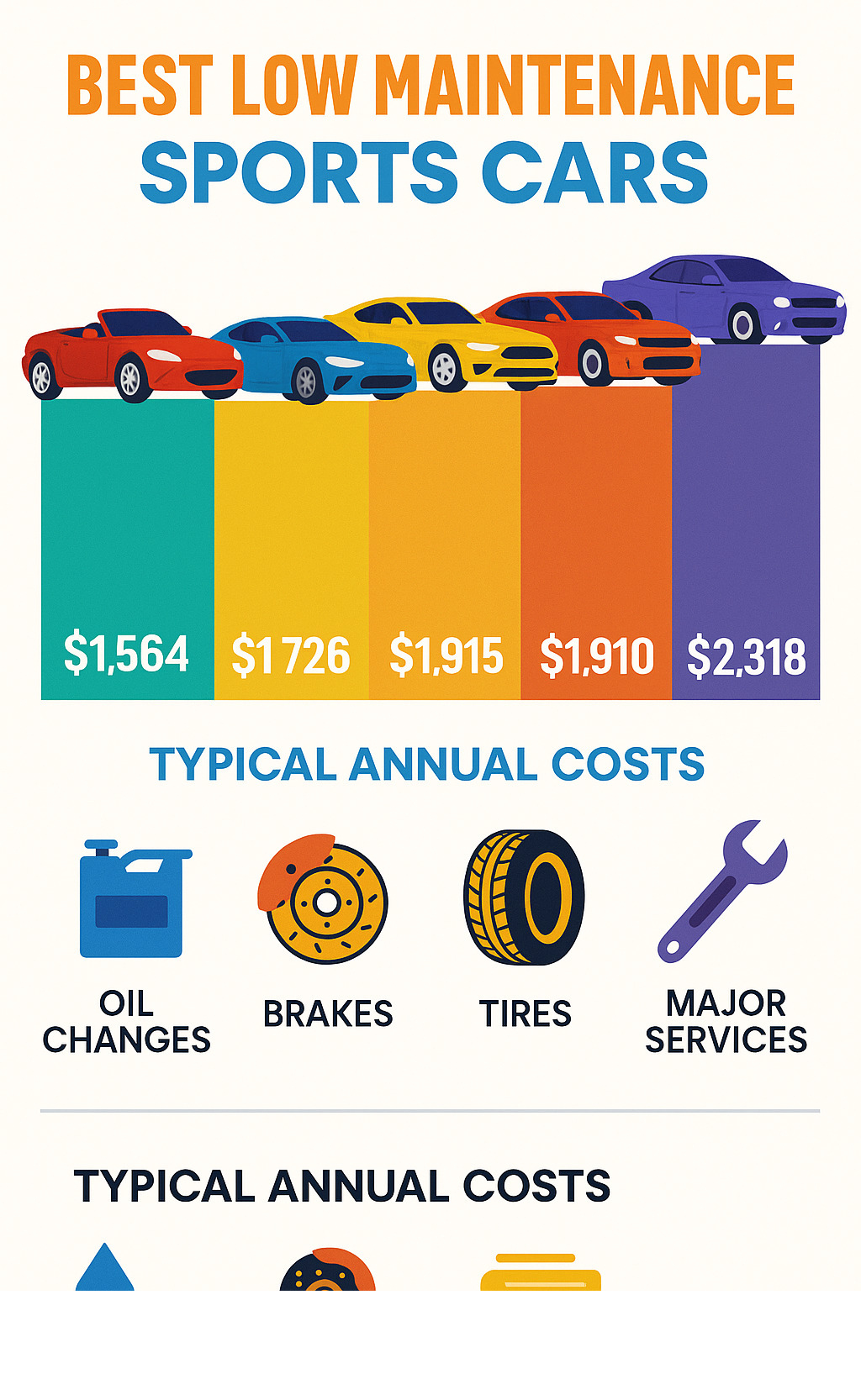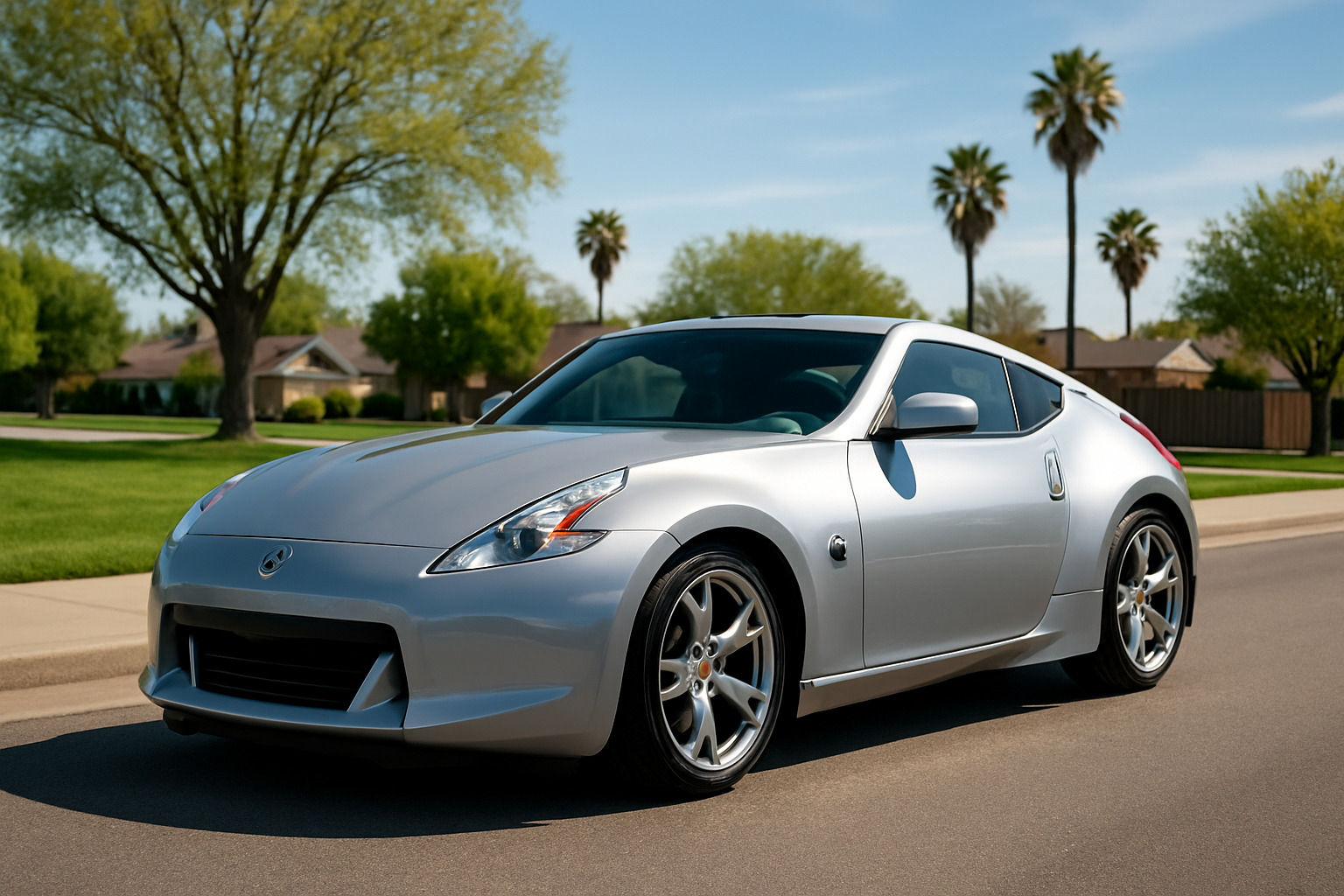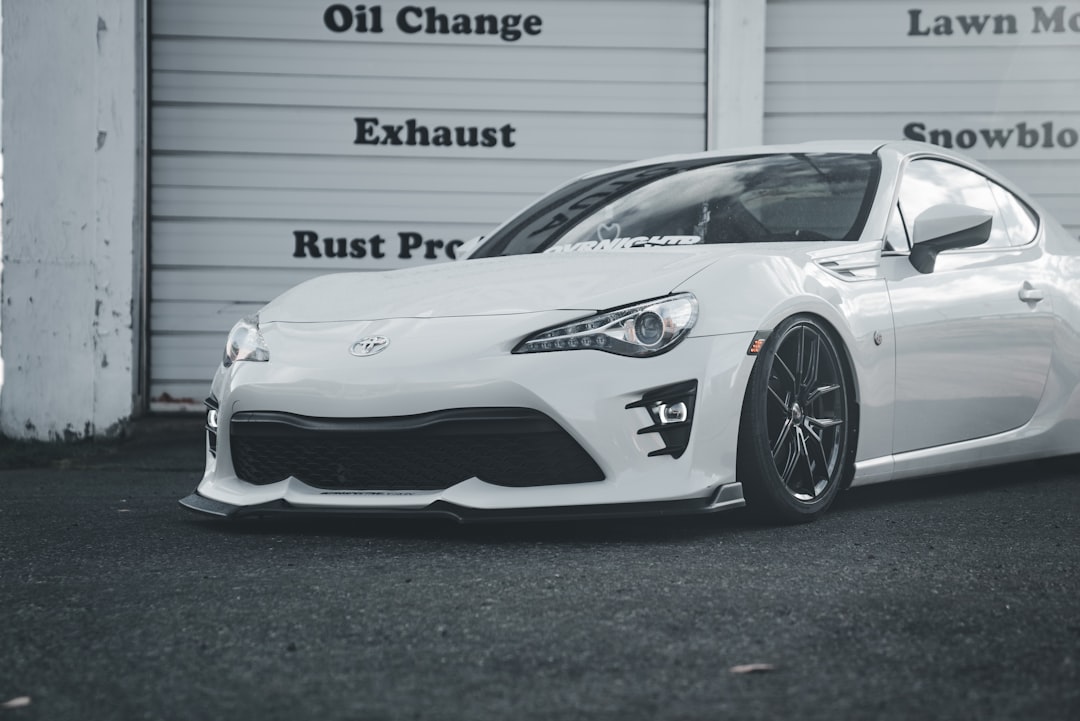Best Low Maintenance Sports Cars: 5 Top Picks for 2025
Why Finding the Right Low-Maintenance Sports Car Matters
The best low maintenance sports cars combine driving thrills with practical ownership costs, making performance accessible without breaking your budget. Here are the top picks based on 5-year maintenance data:
New Sports Cars (2024-2025):
– Mazda MX-5 Miata – $1,564 over 5 years
– Toyota GR86/Subaru BRZ – $1,726 over 5 years
– Ford Mustang – $1,915 over 5 years
– Chevrolet Camaro – $1,910 over 5 years
Used Sports Cars:
– 2007 Mazda MX-5 Miata – $429 annually
– 2010 Nissan 370Z – $504 annually
– 2011 Honda CR-Z – $430 annually
Sports cars don’t have to be money pits. While many performance cars prioritize speed over reliability, smart buyers can find models that deliver both excitement and dependable ownership.
The key is understanding what makes a sports car “low maintenance.” Simple drivetrains, wide parts availability, and proven reliability separate the budget-friendly performers from the wallet-draining exotics.
Modern sports cars like the Miata and GR86 cost less to maintain than many family sedans. Even powerful options like the Corvette ($2,259 over 5 years) prove that performance doesn’t always mean expensive repairs.
Your dream car shouldn’t become a financial nightmare. The right choice means more time driving and less time at the service center – exactly what every driving enthusiast wants.

Handy best low maintenance sports cars terms:
– care and maintenance of sports equipment
– jaguar f type repair manual
– sports car repair shop
What Makes A Sports Car ‘Low Maintenance’?
Not all sports cars are created equal when it comes to your wallet. The best low maintenance sports cars share specific traits that keep ownership costs reasonable while still delivering the driving thrills you crave.
Simple drivetrain design makes the biggest difference in long-term costs. Take the Mazda MX-5 Miata’s naturally aspirated 2.0-liter engine – it’s straightforward, proven, and doesn’t need exotic fluids or specialized tools. Compare that to a twin-turbo setup with intercoolers, complex plumbing, and premium fuel requirements. Fewer moving parts simply mean fewer things that can break.
The magic happens when manufacturers stick to proven technology instead of chasing the latest engineering trends. Toyota’s approach with the GR86 exemplifies this perfectly – they used a refined version of Subaru’s boxer engine rather than developing something entirely new.
Parts availability can make or break your maintenance budget. When your sports car shares components with popular family cars, replacement parts cost pennies on the dollar compared to exotic alternatives. A Ford Mustang water pump might cost $150 because it’s similar to other Ford products. Meanwhile, a specialized European sports car part could easily run $800 or more.
Mass-market sports cars benefit from extensive dealer networks and thriving aftermarket support. You’ll find Camaro parts at virtually any auto parts store in America, but tracking down components for limited-production models often means expensive special orders.
Service intervals vary dramatically between brands, and this directly impacts your annual costs. Toyota and Mazda typically stretch oil changes to 10,000 miles with conventional service requirements. Some European manufacturers demand service every 5,000 miles using specific synthetic fluids that cost three times more.
For more detailed guidance on keeping any car running smoothly, our Car Maintenance Tips resource covers everything from basic service schedules to advanced troubleshooting.
Key Cost Drivers Vs Regular Cars
Sports cars do face some unique maintenance realities compared to your average family sedan, but the gap isn’t as dramatic as many people assume.
Labor hours represent the biggest difference you’ll encounter. Sports car repairs often require more specialized knowledge and complex procedures. However, cars like the Subaru BRZ keep labor costs reasonable by using accessible layouts that don’t require removing half the engine bay to reach basic components.
Tire size creates the most noticeable ongoing expense difference. Sports cars typically wear larger, lower-profile performance tires that cost significantly more to replace and tend to wear faster than standard sizes. A set of 18-inch performance tires might run $800-1,200 compared to $400-600 for regular sedan tires.
Here’s the encouraging reality: modern best low maintenance sports cars have dramatically narrowed the cost gap with regular cars. Many now use standard oil filters, common brake pad specifications, and widely available components that keep service expenses surprisingly competitive with family transportation.
The Best Low Maintenance Sports Cars For 2025
When it comes to finding the best low maintenance sports cars for 2025, the good news is that modern engineering has made performance more accessible than ever. Gone are the days when owning a sports car meant signing up for endless repair bills and constant trips to the mechanic.
Our analysis of comprehensive maintenance data reveals some pleasant surprises. The top performers combine proven reliability with genuine driving thrills, all while keeping your wallet happy. We’ve focused on 5-year maintenance projections, manual transmission availability, and solid warranty coverage to identify the real winners.
Mazda MX-5 Miata — Benchmark Bargain
The Mazda MX-5 Miata continues to amaze with just $1,564 in projected maintenance costs over five years. That’s less than many family sedans, making it the undisputed champion of affordable sports car ownership.
What makes the Miata so special? It’s all about keeping things simple. The naturally aspirated 2.0-liter Skyactiv engine is the same proven powerplant used across Mazda’s lineup. No turbochargers to worry about, no complex direct injection systems to clean – just honest, reliable power.
Parts are everywhere and competitively priced. Walk into any auto parts store and you’ll find Miata components on the shelf. The lightweight design helps too – at just 2,341 pounds, the Miata is easier on brakes, tires, and suspension components than heavier sports cars.
Toyota GR86/Subaru BRZ — Lightweight Twins
The Toyota GR86 and Subaru BRZ share identical $1,726 five-year maintenance costs, proving that collaboration can create something special. These twin sports cars combine Toyota’s reliability reputation with Subaru’s boxer engine expertise.
The naturally aspirated 2.4-liter boxer engine delivers 228 horsepower while maintaining refreshing simplicity. The horizontal layout provides that famous low center of gravity for exceptional handling, while also making most service points easily accessible for mechanics.
Boxer engine simplicity is a real advantage here. Unlike complex turbocharged setups, this engine focuses on proven technology that’s been refined over decades. Both Toyota and Subaru dealer networks offer competitive service pricing.
Ford Mustang EcoBoost — Everyday Pony
The Ford Mustang achieves $1,915 in five-year maintenance costs, making full-size American sports car performance surprisingly affordable. The EcoBoost four-cylinder engine proves that turbocharging doesn’t have to mean maintenance headaches.
Ford’s 2.3-liter turbocharged engine produces an impressive 310 horsepower while sharing components with other Ford models. This turbo-four economy extends beyond fuel savings to parts availability and service expertise. Ford’s massive dealer network ensures competitive labor rates nationwide.
Chevrolet Camaro LT — Muscle On A Budget
The Chevrolet Camaro delivers $1,910 in five-year maintenance costs, remarkable value for genuine American muscle car performance. The proven V6 and V8 engines benefit from decades of GM development and extensive parts availability.
Here’s the catch: GM announced the Camaro’s platform end after 2024, making current models the final generation. This creates both opportunity and urgency. Remaining inventory may offer discounts, while future parts support remains strong due to the large number of Camaros already on the road.
Dodge Challenger R/T — Old-School, Easy-Fix
The Dodge Challenger requires $2,318 over five years – slightly higher than our other picks but still reasonable for V8 performance. The pushrod V8 represents old-school simplicity that many mechanics can service without specialized training.
The 5.7-liter Hemi V8 has powered thousands of Chrysler products over the years, creating massive parts availability and service expertise. The huge aftermarket support means both performance parts and maintenance items stay competitively priced.

For additional insights into maintaining sports cars affordably, explore our guide on Sports Cars with Low Repair & Maintenance Costs.
Budget-Friendly Used Sports Cars That Won’t Drain Your Wallet
Smart buyers know the used car market holds the real treasures. The best low maintenance sports cars become even more appealing when you let someone else absorb that initial depreciation hit. We’ve dug deep into reliability data and real-world ownership costs to find sports cars that deliver thrills without the financial spills.
These picks combine strong J.D. Power reliability scores with reasonable annual maintenance costs. Better yet, they’ve already taken their biggest depreciation hit, so your wallet won’t feel the sting of rapid value loss.
For more insights on affordable performance, check out our guide to Affordable Luxury Sports Cars.

Nissan 370Z (2010) — Bulletproof & Cheap
The 2010 Nissan 370Z proves that reliable performance doesn’t have to cost a fortune. With just $504 in annual maintenance costs and a solid 84/100 J.D. Power reliability rating, it’s hard to find better value in the sports car world.
That legendary VQ37VHR V6 engine is the star of the show. Many owners report sailing past 200,000 miles with nothing more than regular oil changes and basic maintenance. The naturally aspirated 3.7-liter V6 pumps out 332 horsepower without any turbocharger complexity to worry about.
Used prices typically range from $11,838 to $19,267, putting serious performance within reach of many enthusiasts. Manual transmission models are especially desirable – they’re more fun to drive and often need less maintenance than automatics.
Mazda MX-5 Miata (2007) — DIY Dream
The 2007 Mazda MX-5 Miata achieves something remarkable: $429 annual maintenance costs while delivering pure driving joy. The NC generation hit the sweet spot – most early bugs were worked out, but complexity hadn’t crept in yet.
Finding one between $7,043 and $13,161 isn’t difficult, making this an accessible entry point into sports car ownership. The 2.0-liter four-cylinder is beautifully simple and incredibly reliable when maintained properly.
Here’s where the Miata really shines for budget-conscious owners: the community support is exceptional. You’ll find detailed DIY guides for virtually every maintenance task. Parts are everywhere, from OEM components to performance upgrades.
Hyundai Genesis Coupe (2015) — Underrated Gem
The 2015 Hyundai Genesis Coupe flies under most people’s radar, which works in your favor. With roughly $550 annual maintenance costs, you get modern performance features without the premium price tag.
The 3.8-liter V6 delivers 348 horsepower and has proven itself reliable across Hyundai’s lineup. Used prices between $10,388 and $11,390 represent incredible value – you’d struggle to find similar performance for less money.
What makes this deal even sweeter? Hyundai’s generous 10-year/100,000-mile powertrain warranty often transfers to subsequent owners. That’s peace of mind you won’t get with most used sports cars.
Honda CR-Z (2011) — Hybrid Fun Saver
The 2011 Honda CR-Z offers something unique: hybrid efficiency with a 6-speed manual transmission. At just $430 annual maintenance costs, it proves that eco-friendly can still be fun.
Used prices between $5,507 and $8,000 make this one of the most affordable sports cars you can buy. The hybrid powertrain delivers excellent fuel economy while maintaining Honda’s reputation for bulletproof reliability.
The manual transmission hybrid setup is practically extinct in today’s market, making the CR-Z special. Many owners report 35+ MPG while still enjoying genuine sports car handling – a combination that’s hard to beat.
Chevrolet Camaro LT (2010) — Reliable Muscle
The 2010 Chevrolet Camaro LT earned an impressive 88/100 J.D. Power reliability rating with about $530 annual maintenance costs. The first year of the fifth generation worked out most launch issues while keeping the performance intact.
The 3.6-liter V6 produces 312 horsepower and shares its proven reliability with other GM vehicles. Parts are everywhere thanks to GM’s massive dealer network and thriving aftermarket support.
How To Spot The Best Low Maintenance Sports Cars When Shopping
Finding the right used sports car requires detective work beyond just kicking tires and checking paint. Service history documentation tells the real story of how a car has been treated. Complete records suggest responsible ownership and help predict future reliability.
Stock condition matters more than you might think. While modified cars might look exciting, they often sacrifice reliability for performance. Stick with vehicles that have documented maintenance and minimal modifications for the best long-term experience.
Watch out for turbocharger additions, engine management modifications, suspension geometry changes, electrical system alterations, and track-only components. These modifications can turn a reliable sports car into a maintenance nightmare.
Hidden Costs & Ownership Hacks
While the best low maintenance sports cars might surprise you with their reasonable repair costs, smart buyers know that maintenance is just one piece of the ownership puzzle. The real art of affordable sports car ownership lies in understanding and managing all the hidden expenses that can sneak up on you.
Insurance premiums often catch new sports car owners off guard. Here’s where things get interesting – a Mazda MX-5 Miata typically costs less to insure than many family SUVs thanks to its stellar safety record. Meanwhile, that flashy Mustang GT might have your insurance agent reaching for the premium calculator.
Fuel costs create another layer of ongoing expenses that vary wildly between models. Your wallet will definitely notice the difference between a Honda CR-Z sipping fuel at 35+ MPG and a thirsty Dodge Challenger R/T that might struggle to hit 20 MPG in city driving. We’re talking about potential differences of $1,000+ annually just in gas money.
Tire expenses represent one of those unavoidable realities of sports car ownership. Those gorgeous 19-inch wheels might look amazing, but they’ll demand $1,200 tire replacements every 25,000 miles. Compare that to more modest 16-inch setups that might need just $600 worth of rubber lasting 40,000 miles, and the math becomes pretty clear.
| Annual Cost Category | Sports Car Average | Family Sedan Average | Difference |
|---|---|---|---|
| Insurance | $1,800 | $1,200 | +$600 |
| Fuel (15,000 miles) | $2,400 | $1,800 | +$600 |
| Tires | $600 | $400 | +$200 |
| Premium Maintenance | $800 | $500 | +$300 |
For competitive insurance rates, the Coverage.com comparison tool can help you find the best deals for your specific sports car.
Keep Costs Low With Smart Maintenance
The secret to keeping your sports car running affordably isn’t complicated – it’s all about smart scheduling and strategic choices. Most modern sports cars actually need oil changes every 7,500 to 10,000 miles, despite what that quick-lube place keeps telling you about 3,000-mile intervals.
Following manufacturer fluid schedules prevents expensive disasters while avoiding unnecessary early services. Your owner’s manual isn’t just bathroom reading material – it’s your roadmap to affordable ownership. That $50 coolant flush you keep putting off? It’s preventing a $2,000 engine rebuild down the road.
The OEM versus aftermarket parts debate doesn’t have to be complicated. OEM parts guarantee perfect fit and maintain warranty coverage, but quality aftermarket alternatives can save significant money. The trick is doing your homework – some aftermarket parts actually exceed OEM quality, while others create more problems than they solve.
DIY maintenance basics can slash your ownership costs if you’re willing to get your hands dirty. Oil changes, air filter swaps, and brake pad replacements are well within most enthusiasts’ capabilities with basic tools and a little patience. Even if you only tackle the simple stuff, you’re looking at hundreds in annual savings.
For step-by-step guidance on handling your own maintenance, check out our comprehensive Ultimate Guide to Car Maintenance for 2025.
When A Sports Car Repair Shop Saves Money
Here’s something that might surprise you – specialist repair shops sometimes cost less than dealer service, even with higher hourly rates. The magic happens in efficiency and expertise. A sports car specialist who works on Miatas all day can knock out a job in two hours that might take a general mechanic four hours to figure out.
Bulk parts purchasing gives established specialists another advantage. They maintain relationships with suppliers that translate into better prices for customers. Your neighborhood sports car guru might get that water pump for $30 less than you’d pay at the parts store.
Looking for qualified technicians who understand sports cars? Our Sports Car Repair Shop directory can connect you with specialists in your area who know how to keep your dream car running without breaking your budget.
Frequently Asked Questions About Low-Maintenance Sports Cars
Do sports cars really cost more to maintain than regular cars?
Here’s the surprising truth: best low maintenance sports cars often cost less to maintain than many luxury sedans or complex SUVs. The numbers tell the story – a Mazda MX-5 Miata’s $1,564 five-year maintenance cost actually beats many economy cars.
The secret lies in smart shopping rather than avoiding sports cars entirely. Mass-market performance cars like the Toyota GR86, with its $1,726 five-year cost, use proven components shared across multiple model lines. This creates the same parts availability and competitive pricing you’d find with regular cars.
What drives up costs isn’t the “sports car” label – it’s complexity. A naturally aspirated engine with a manual transmission typically requires less expensive maintenance than a turbocharged automatic, regardless of how much power it makes. Simple designs mean fewer things can go wrong.
The best low maintenance sports cars prove that thrills don’t have to drain your wallet. Choose wisely, and you’ll spend more time driving than paying repair bills.
Which brands build the most reliable sports cars?
Japanese manufacturers consistently lead the reliability race, and the data backs this up. Mazda, Toyota, and Nissan have decades of experience building sports cars that start every morning and run for years with basic maintenance.
The 2010 Nissan 370Z’s impressive 84/100 J.D. Power reliability rating isn’t an accident – it’s the result of using proven engineering across their lineup. When your sports car shares parts with family sedans, you get family sedan reliability with sports car fun.
American manufacturers have made remarkable improvements in recent years. The 2010 Chevrolet Camaro’s 88/100 J.D. Power rating actually exceeds many luxury brands, while the Ford Mustang EcoBoost achieved an impressive 87/100 score.
German manufacturers like Porsche certainly build excellent sports cars, but they typically come with higher maintenance costs. A BMW Z4’s $3,722 five-year maintenance cost shows the premium you pay for European engineering.
The most reliable sports cars share common traits: proven engines, simple drivetrains, and extensive parts networks. Brand loyalty matters less than smart engineering choices.
How does insurance affect overall ownership costs?
Insurance can be your biggest surprise when buying a sports car – sometimes costing more annually than maintenance itself. But here’s what many buyers don’t realize: rates vary wildly between seemingly similar models.
The Mazda MX-5 Miata often costs less to insure than many family sedans. Its excellent safety record and low theft rates work in your favor. Meanwhile, high-performance models like the Chevrolet Corvette or Ford Mustang GT can carry premium rates that add thousands to annual ownership costs.
Your insurance rate depends on multiple factors: driver age and experience, location and garage storage, annual mileage, safety features and ratings, and theft statistics for your specific model. A 25-year-old in Detroit will pay vastly different rates than a 45-year-old in suburban Ohio.
Smart buyers shop insurance quotes before signing purchase papers. Rate differences can exceed $2,000 annually between similar models, completely changing the ownership equation. Don’t let insurance surprise ruin your sports car dreams – research rates early and factor them into your budget.
Conclusion
The best low maintenance sports cars have shattered the myth that driving excitement requires expensive ownership. Models like the Mazda MX-5 Miata at just $1,564 over five years and the Toyota GR86 at $1,726 prove that genuine sports car thrills can come with economy car maintenance costs.
Your choice of sports car makes all the difference. Smart selection based on reliability data, parts availability, and proven drivetrains separates the budget-friendly performers from the wallet-draining alternatives. Mass-market sports cars benefit from extensive dealer networks and competitive parts pricing that exotic alternatives simply can’t match.
The used market sweetens the deal even further for budget-conscious enthusiasts. Finding gems like the 2010 Nissan 370Z at $504 annually or the 2007 Mazda MX-5 Miata at just $429 annually opens doors to sports car ownership that seemed impossible just years ago.
The automotive industry’s transition toward electrification adds urgency to this opportunity. Current internal combustion sports cars represent the last generation of traditional performance machines. This creates a unique moment for enthusiasts seeking classic driving experiences before electric alternatives reshape the entire landscape.
Think about it – we’re living through the twilight of naturally aspirated engines, manual transmissions, and the raw connection between driver and machine. These cars aren’t just transportation; they’re cultural artifacts that will only become more precious with time.

At Car News 4 You, we live at the intersection of automotive passion and practical ownership. Our expertise in sports car culture and automotive innovation helps enthusiasts make informed decisions that maximize driving enjoyment while keeping financial stress in the rearview mirror.
The right sports car choice means more weekends carving canyon roads and fewer Saturdays stuck at service centers. It means hearing that perfect exhaust note without hearing your wallet cry. That’s exactly what every driving enthusiast deserves – pure fun without the financial fuss.
Your dream car doesn’t have to become a money pit. With the right knowledge and smart selection, affordable sports car ownership is within reach. The road to driving nirvana starts with choosing wisely.
For additional guidance on keeping your sports car running strong without breaking the bank, explore our comprehensive resource on Sports Cars with Low Repair & Maintenance Costs.









